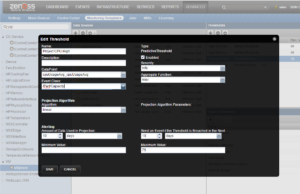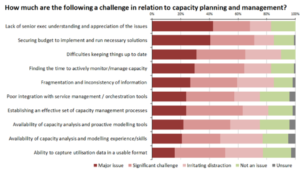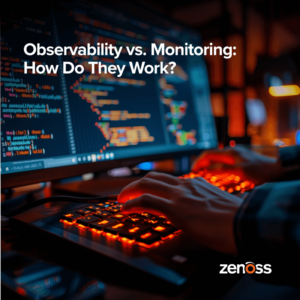
There’s nothing like a good fire drill, trying to figure out which server in a key application is hurting, is there? Why do we rely on instinct and fire alarms? The article named executive understanding, budget, and work effort as the top challenges.
Kanban Capacity Management
How about a nice simple solution you can implement in just a few minutes? A solution that focuses on warning you of looming issues a few days in advance, in areas you can actually fix quickly. Something that works equally well for servers at AWS or in VMware?
And that you have complete control over, and works with your existing monitoring system. Nothing new to buy, no new agents.
Well, if you’re running Zenoss Service Dynamics, you’re in luck! Let’s look at Kanban (just in time) Capacity Management with Zenoss!

Starting incrementally is a great approach and helps keep my blog articles to a reasonable length, too.
I suggests starting by focusing on CPU utilization for VMs. Add your predictive threshold to the standard VM template using the average CPU metric, keeping in mind that the normal range is 0-9999, for 0-99.99%. Add an upper limit at, say 75%, and a lower limit at 10%. You’ll get a 10 day prediction either way. That’s enough time to resize the VM during a normal maintenance window. Ah, planning.

After that’s been working a few weeks, add CPU utilization for hypervisors at 75% or so, AMIs at the VM value; memory utilization for VMs and hypervisors; and for network interfaces at 50%. Watch and tweak as necessary.
It won’t take long to make just-in-time capacity management part of a regular routine, and eliminate most of those nasty surprises!
How do I get the Predictive Thresholding ZenPack?
The latest Predictive Thresholding ZenPack is available for Zenoss Service Dynamics customers with an active subscription.
Learn more about Zenoss products and solutions and schedule a demo at https://www.zenoss.com
Join and engage with the Zenoss Community at http://www.zenoss.org






